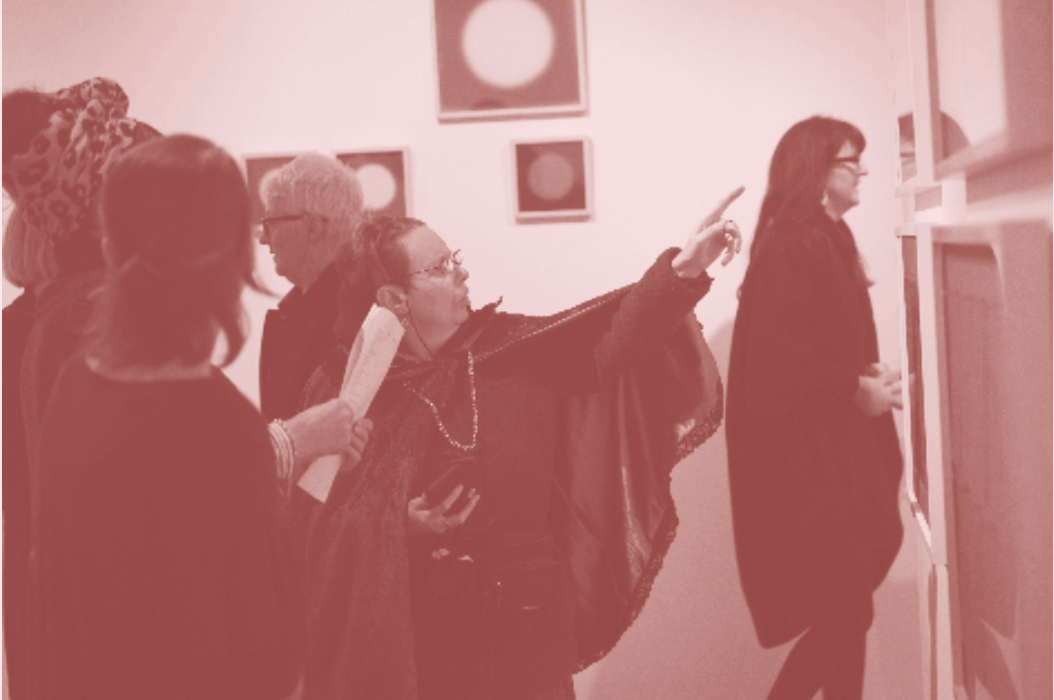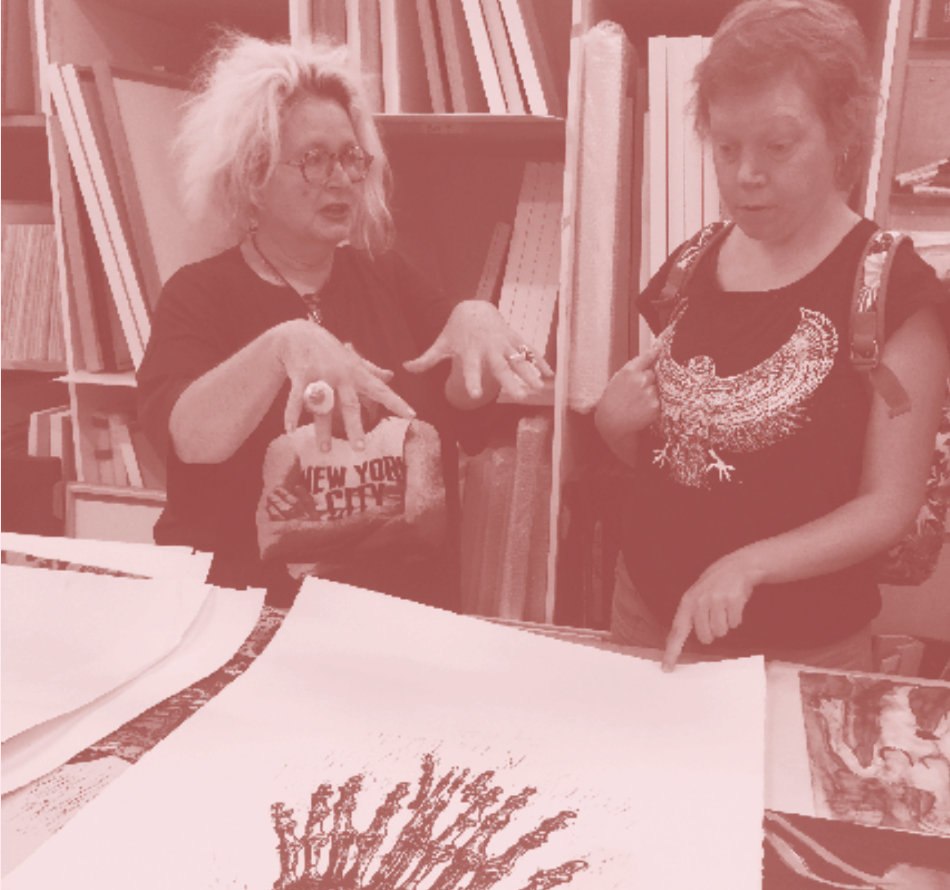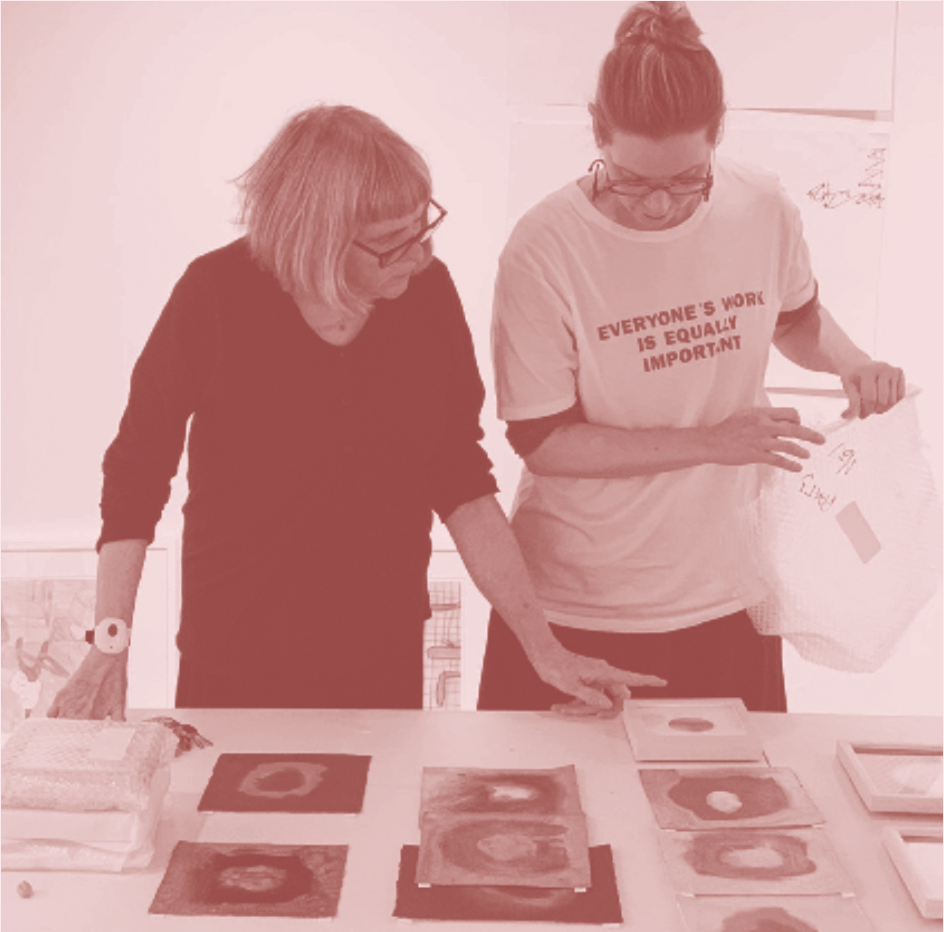Let Go of That Fear, and Just Do It—
Sim Luttin
Curator & Gallery Manager
at Arts Project Australia and
the Deputy Chair at Craft Victoria
Anyone who knows Arts Project Australia is aware that we are a Global leader in the arts. With a 46-year history stemming from our Melbourne- based studio and gallery, it is no mean feat that we have achieved this status. It is a testament to the quality of the artwork and the commitment to contemporary practice by the artists. It is also an acknowledgement of the professional support, promotion, advocacy and partnerships that Arts Project Australia cultivates and which underpin our philosophy and everything we do.
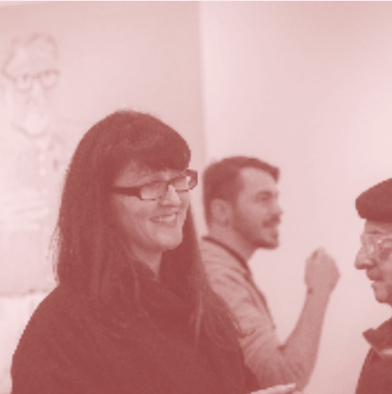
Organisations worldwide like Arts Project Australia help to reshape long-held perceptions of who can participate in contemporary art practice. Hybrid studio/gallery/representative organisations such as ours elevate the profiles of marginalised artists through art and disability advocacy. ultimately, we generate positive social and cultural shifts across the globe, actively transforming the way people critically engage with a diverse range of artists and their work – artists who would otherwise be overlooked.
At Arts Project Australia, we take a strategically proactive approach toward working in the cultural sector. We are committed to boldly leading by example and, by doing so, set new industry standards in working with marginalised artists and connecting them with the national and international art sectors.
We do this by professionally supporting people with an intellectual disability to be artists through our studio, gallery and broader representation and advocacy. We actively partner, present, promote, write about and contextualise our artists and their work within contemporary art in collaboration with other leading institutions, publications and public platforms.
Much thought goes into our role as an industry leader, which has led to greater respect, awareness and opportunities for marginalised artists in Australia and overseas. Our advocacy empowers people, and we change long-held perceptions and outdated paradigms regarding the capacity of people with an intellectual disability to work and be counted as legitimate participants in the arts. In recent decades, significant steps have been taken in Australia to improve arts participation rates for people with a disability. There has also been increasing recognition globally of the value of the arts
in representing diverse voices, which has a positive effect within communities and generates a greater sense of belonging.
The right of everyone to participate in and enjoy the arts has been enshrined in the united Nations universal Declaration of Human Rights since 1948,1 and there is global recognition of the intrinsic and instrumental value of the arts in enhancing wellbeing and strengthening communities. Despite this, it is only recently that many public and government agencies and others have sought to enable people with an intellectual disability to enjoy the arts as both practitioners and consumers. Article 5 of the 2001 uNESCO universal Declaration on Cultural Diversity states that:
Cultural rights are an integral part of human rights, which are universal, indivisible and interdependent. The flourishing of creative diversity requires the full implementation of cultural rights … all persons have the right to participate in the cultural life of their choice and conduct their own cultural practices, subject to respect for human rights and fundamental freedoms.2
More needs to be done to move beyond issues of social and institutional categorisation. For example, grouping people with disability in exhibitions that are solely of work by ‘people with disability’ – rather than in contemporary art exhibitions more broadly – can result in harmful stereotyping and ‘othering’. So, rather than meaningfully engaging marginalised artists in contemporary art discourse as legitimate voices, these exhibitions tend to group these artists on the periphery of contemporary art and often in the feel-good ‘community art’ section. This common one- dimensional representation undermines the dedication to professional practice and quality of work that contemporary artists – who happen to have an intellectual disability – are making. A more vigorous movement towards arts equality still needs to happen and will require a significant cultural shift to an environment where fostering an open, all-encompassing and diverse arts community is something we come to value, expect and just do.
In 2018, Arts Project Australia was invited to participate in a panel discussion with Catherine Bell, Jane Trengove and Lindy Judge as part of the university of Melbourne’s Doing Feminism / Sharing the World conference led by Professor Anne Marsh. Arts Project Australia presented a paper titled Foraging for Feminism & the Power of Doing, which raised issues of gender power imbalances and marginalisation in the arts as well as the lack of visibility and the under- representation of female artists with disability. We provoked the audience to consider the systemic lack of representation of artists with disability, let alone those with an intellectual disability, in galleries, institutions, collections and online – and if an artist is female, it is even worse. To this day, the mainstream arts sector does not often consider including these artists. If those working within the sector do consider them, they go to organisations such as Arts Project Australia for recommendations of artists. While these opportunities are of great benefit to our artists, it is practically impossible for those sitting outside the establishment to engage and participate.
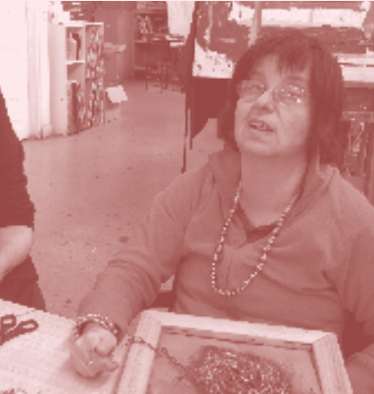
The Doing Feminism / Sharing the World conference dialogue fuelled further conversations with our panel peers, where we discussed taking the idea
of doing feminism further and touring the panel interstate to stir things up nationally. We felt that we had begun a conversation that needed to be had and that our provocations were a starting point rather than an end point. After many discussions, there emerged the idea to invite Catherine Bell to present an all-female exhibition at Arts Project Australia based on doing feminism, and FEM-aFFINITY was born.
Arts Project Australia regularly invites arts professionals, including directors, curators, artists and writers, to partner with us on exhibitions and projects. It is a strategy to increase awareness of our artists and their work, as well as to empower artists by engaging with their contemporary peers, enhance critical discourse and widen our professional networks. It is also an opportunity for advocacy and to agitate for broader attitudinal, social and institutional change. Inviting Catherine Bell to work with us on an exhibition about feminism – or, more accurately, an exhibition focused on the embodied experience of doing feminism – created an opportunity to bring marginalised female artists who work at Arts Project to the fore and to place them alongside their contemporary female peers. It was also a chance to challenge preconceptions of what feminism is and to explore what it can be if the legitimate or activist ‘feminist voice’ is given broad parameters. The exhibition raised a number of questions; for example, is an established artist who has an intellectual disability making any less of a feminist statement with their work than their contemporary female peers? Is someone whose primary mode of communication is through art any less of an artist than their contemporary peers? Is having an embodied knowledge of art- making that drives practice a lesser feminist act than being a feminist artist? Where is the fundamental human right to self-determination? The artists in FEM-aFFINITY are women who are positively forging inimitable careers in the arts, demonstrating a dogged determination and dedication to their practice. They are doing it – they are doing feminism.
We believe the best creative outcomes stem from having shared values, such as reciprocity, trust and friendship. These values are commonly associated with feminist principles, and FEM-aFFINITY sets a high standard for these values and for empowerment in the arts. Arts Project Australia engenders this approach within its organisational culture and, innately, we seek these qualities when collaborating with external artists, curators and arts professionals – an approach that is also central to Catherine Bell’s practice. It is how we create a better culture where the representation of diverse perspectives is at the core. Not because it is the right thing to do but because it is an empowering model to work from and is what we should fundamentally expect as artists, arts professionals and human beings.
FEM-aFFINITY is a multi-layered, multi-ability, inter-generational, female- led group exhibition and is the start of a much bigger conversation that has feminist values at the core of its curatorial premise. The exhibition, which presents collections of past work juxtaposed with new work and collaborations, demonstrates the participating artists’ depth of practice and imparts to audiences the breadth of practice that is possible within feminism. The exhibition recognises that there is a myriad of voices, methods, interpretations, understandings and synergies within feminism, which also includes a kind of accidental feminism born out of doing. Accidental feminists aren’t deliberately creating work within a traditional feminist canon; rather, they have a depth of practice as female makers, to the extent that they lead by example and have an impact on others by doing. Accidental feminists inspire others in art and life – look at what Cathy Staughton has achieved in her 30-plus-year international career as an artist. She has worked in the Arts Project Australia studio since 1989 and has had four solo exhibitions, including at MADmusée in Liège, Belgium, in 2002. She has an enviable CV that reveals she has shown in more than 120 group exhibitions in Australia, Belgium, the USA and Switzerland and is represented in various collections, including the National Gallery of Victoria.
To go the distance as a female artist is an empowering feminist act. It is validating for the artist and for their extended network, as well as for other aspiring artists, to see that women (from all walks of life) are carving out meaningful, thought-provoking and critically engaging careers in the arts. Their work forms part of a vibrant arts ecology that recognises that difference is something to celebrate and not isolate.
Finally, in a recent conversation with Eden Menta, we reflected on her art practice and the recent video that Arts Project Australia produced to promote her and her work. We posed the question of whether she considers herself to be a feminist artist. While she is currently not actively creating feminist work, Menta is proud of her art practice as a young female artist and said that she ‘hopes other women see my work and are encouraged by it … [when people] see my work, it might inspire them to make art’.
By approaching her practice this way, Menta is doing feminism. She pondered this for a moment and then said, ‘I hadn’t thought about it that way’, but agreed it is a way to think about what she is doing. As Menta affirmed of art-making in her recent video, ‘Just let go of that fear and just do it’.
1. united Nations, universal Declaration of Human Rights, https://www.un.org/ en/universal-declaration-human-rights/; accessed 27 July 2019.
2. 2001 uNESCO universal Declaration on Cultural Diversity, http://portal.unesco.org/en/ev.php- uRL_ID=13179&uRL_DO=DO_ TOPIC&uRL_SECTION=201.html; accessed 27 July 2019.
